
About:
- The Indian Olympic Association is the governing body for the Olympic Movement and the Commonwealth Games in India.
- As an affiliated member of the International Olympic Committee (IOC), Commonwealth Games Federation (CGF), Olympic Council of Asia (OCA) and Association of National Olympic Committees (ANOC), the IOA administers various aspects of sports governance and athletes’ welfare in the country.
- In this regard, the IOA oversees the representation of athletes or teams participating in the Olympic Games, Commonwealth Games, Asian Games and other international multi-sport competitions of IOC, CGF, OCA and ANOC.
- The Indian Olympic Association is recognised by the Ministry of Youth Affairs and Sports.
History:
- The IOA was established in the year 1927 with Sir Dorabji Tata and Dr. A.G. Noehren as the Founding President and Secretary General respectively. It is registered as a Non-Profit Organisation under the Societies Registration Act of 1860.
Governance:
- The Indian Olympic Association is currently governed by a 32-member Executive Council, headed by President.
- The election for the Executive Council is held once in every 4 years.

About:
- It is a form of hacking that lets attackers access a device through its discoverable Bluetooth connection.
- Once a device or phone is bluebugged, a hacker can listen to the calls, read and send messages and steal and modify contacts.
- It started out as a threat for laptops with Bluetooth capability.
- Later hackers used the technique to target mobile phones and other devices.
Process:
- Bluebugging attacks work by exploiting Bluetooth-enabled devices.
- The device’s Bluetooth must be in discoverable mode, which is the default setting on most devices.
- The hacker then tries to pair with the device via Bluetooth.
- Once a connection is established, hackers can use brute force attacks to bypass authentication.
- They can install malware in the compromised device to gain unauthorised access to it.
- Bluebugging can happen whenever a Bluetooth enabled device is within a 10-metre radius of the hacker.
- However, according to a blog by VPN service provider NordVPN, hackers can use booster antennas to widen the attack range.
Which devices are most susceptible to such attacks?
- Any Bluetooth-enabled device can be bluebugged.
- Wireless earbuds are susceptible to such hacks.
- Apps that enable users to connect to their TWS (True Wireless Stereo) devices or earbuds can record conversations.
- The apps of these TWS devices can record conversations.
- Once hacked, the attacker can make and listen to calls, read and send messages, and modify or steal your contacts.
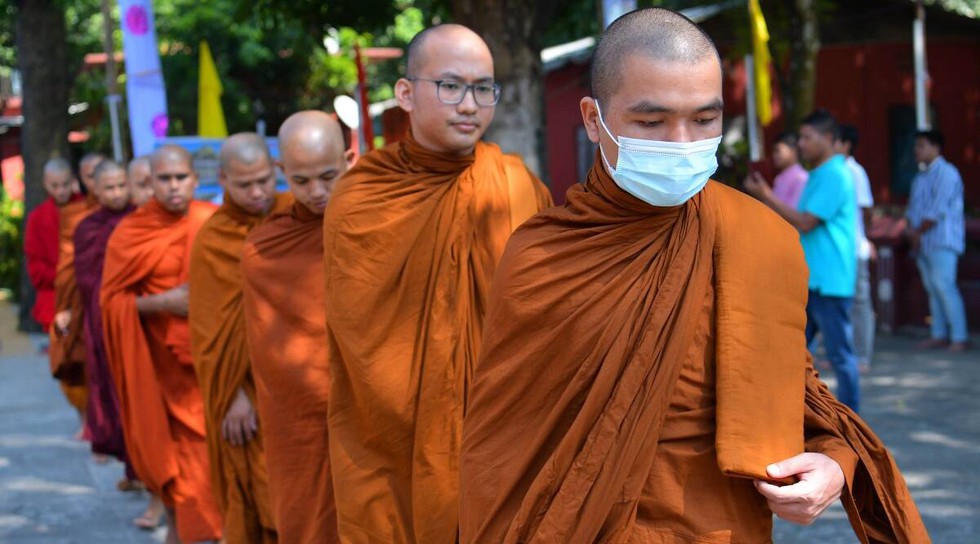
About:
- The Dhamma Dipa International Buddhist University (DDIBU) is expected to become the first Buddhist-run university in India to offer Buddhist education along with courses in other disciplines of modern education as well.
- This university will set a precedent in the history of Indian-Buddhism in promoting and reviving Buddhist culture in India, the birthplace of Buddhism.
- It will be the first Buddhist University in India to be headed by Buddhist monastics and run and monitored by Buddhists.
- The word, Dhammadipa, describes both a core principle and a guiding force, which seeks the light of Dharma, its international scope and measure.
- The University contributes to the highest level of knowledge and education.
- DD IBU hopes to better engage the contemporary world through the insight and depth of Buddhist words.
- At the same time, it is keen to prepare students and youth with knowledge and skills, so that they can live healthy, peaceful and contented lives, able to lead the way of life.
- Students from 31 countries will get a chance to study as well as carry out research on Buddhist literature, culture and tradition in the proposed varsity.
4. Imphal’s Ima Market
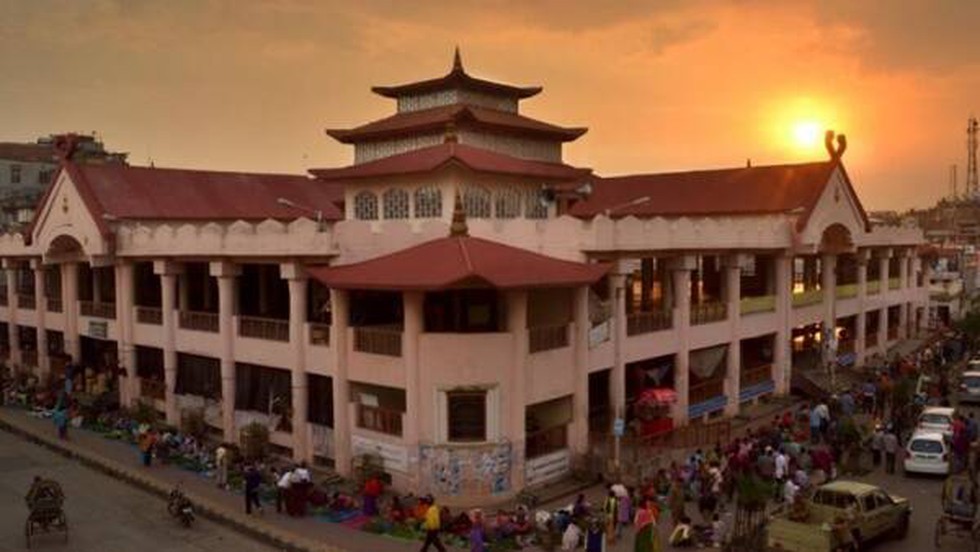
About:
- Ima Keithel, or Mothers’ Market, is an all-women market, said to be the largest such shopping complex in Asia.
- It is a unique all women’s market, having 3,000 “Imas” or mothers who run the stalls, it is split [into] two sections on either side of road.
- Vegetables, fruits, fish and household groceries are sold on one side and exquisite handlooms and household tools on the other. Not far away is a street where beautiful wicker works and basketry are sold.
- Male vendors and shopkeepers are barred here.
- In 2018, the state government announced that legal action would be taken under the Manipur Municipalities Act, 2004 if any male vendor was found selling goods at the market.
History:
- The Ima Market is centuries-old, and has its origins in Lallup Kaba, an ancient bonded labour system.
- Under the system, Meitei men had to compulsorily serve some time working in the military and on other civil projects, keeping them away from home.
- The women, thus, were left to manage on their own, and they developed a market system which is today the Ima Keithel.
- While the system is centuries-old, it had continued till the time of the British.
- Policies of the British government had interfered with the functioning of the Ima market too, but were met with stiff resistance from the women.
5. Open Offer

About:
- According to the SEBI (Substantial Acquisition of Shares and Takeovers) Rules, an open offer is an offer made by the acquirer to the shareholders of the target company inviting them to tender their shares in the target company at a particular price.
- The primary purpose of an open offer is to provide an exit option to the shareholders of the target company on account of the change in control or substantial acquisition of shares, occurring in the target company.
When is an open offer triggered?
- An open offer is triggered if an acquirer holds more than 25 per cent of the public shareholding in the company.
- Prior to 2011, when the new takeover norms kicked in, an open offer got triggered if an acquirer owned more than 15 per cent of the public shareholding in a company.

About:
What are Small Modular Reactors (SMRs)?
- SMRs are advanced nuclear reactors that have a power capacity of up to 300 MW(e) per unit, which is about one-third of the generating capacity of traditional nuclear power reactors. SMRs, which can produce a large amount of low-carbon electricity, are:
- Small – physically a fraction of the size of a conventional nuclear power reactor.
- Modular – making it possible for systems and components to be factory-assembled and transported as a unit to a location for installation.
- Reactors – harnessing nuclear fission to generate heat to produce energy.
Advantages of SMRs
- SMR, with up to 300 MW capacity by nature are flexible in design and require smaller footprint. Given their smaller footprint, SMRs can be sited on locations not suitable for larger nuclear power plants.
- Being mobile and agile technology, SMR can be factory-built unlike the conventional nuclear reactors that are built on–site. Thus, SMRs offers significant savings in cost and construction time.
- SMR is a promising technology in industrial de-carbonization especially where there is a requirement of reliable and continuous supply of power. It is said that SMR is simpler and safer as compared to large nuclear plants.
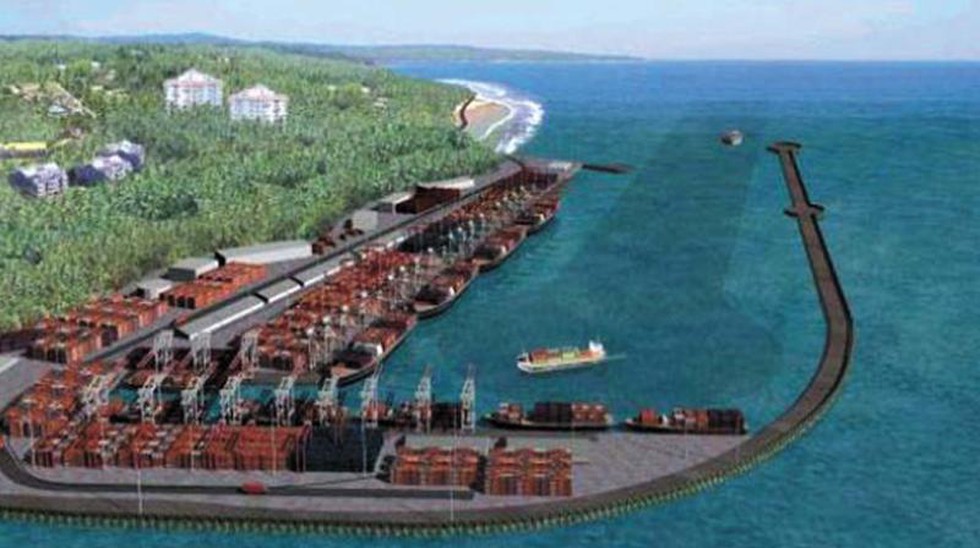
About:
- The allegation is that the big-ticket project is being implemented without sufficiently factoring in ecological safeguards and adequately addressing the concerns of the coastal community.
- The Government of Kerala as part of its various programs for development of the state, has identified to develop Vizhinjam International deep water Multipurpose Seaport.
- It has formed a separate company, viz. Vizhinjam International Seaport Limited (VISL) as a special purpose Government company (fully owned by Government of Kerala) that would act as implementing agency for development of the greenfield port at Vizhinjam in Thiruvananthapuram district, Kerala.
Advantages of Vizhinjam are:
- Availability of 20m contour within one nautical mile from the coast.
- Minimal littoral drift along the coast, hardly any maintenance dredging required.
- Links to national/regional road, rail network
- Flexibility in design and expansion being a Greenfield project
- Proximity to International shipping route
Significance of the project
- Around 95 per cent of India’s foreign trade is conducted through the sea route. In value terms, this works out to 70 per cent of the foreign trade.
- Nearly 30 percent of the freight movement takes place through the international shipping route South of the Indian peninsula, which passes 10 nautical miles off Vizhinjam.
- Currently, India does not have a deep-water container transhipment terminal and depends on Colombo, Singapore and Salalah ports.
- This results in significant loss of foreign currency and revenue, estimated to be about Rs2,500 crore a year. With the completion of the Vizhinjam port, this serious lacuna will be overcome.
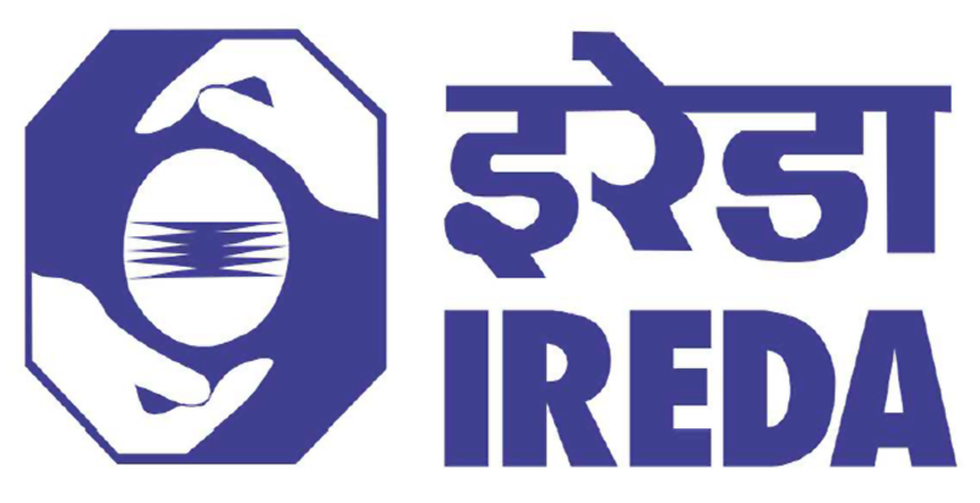
About:
- IREDA is a Mini Ratna (Category – I) Government of India Enterprise under the administrative control of Ministry of New and Renewable Energy (MNRE).
- It is engaged in promoting, developing and extending financial assistance for setting up projects relating to new and renewable sources of energy.
- IREDA has been notified as a “Public Financial Institution” under the Companies Act, 1956 and registered as Non-Banking Financial Company (NBFC) with Reserve Bank of India (RBI).
- IREDA’s Motto is “Energy for Ever.”
The main objectives of IREDA are :
- To give financial support to specific projects and schemes for generating electricity and / or energy through new and renewable sources and conserving energy through energy efficiency.
- To maintain its position as a leading organisation to provide efficient and effective financing in renewable energy and energy efficiency / conservation projects.
- To increase IREDA`s share in the renewable energy sector by way of innovative financing.
- Improvement in the efficiency of services provided to customers through continual improvement of systems, processes and resources.
- To strive to be competitive institution through customer satisfaction.
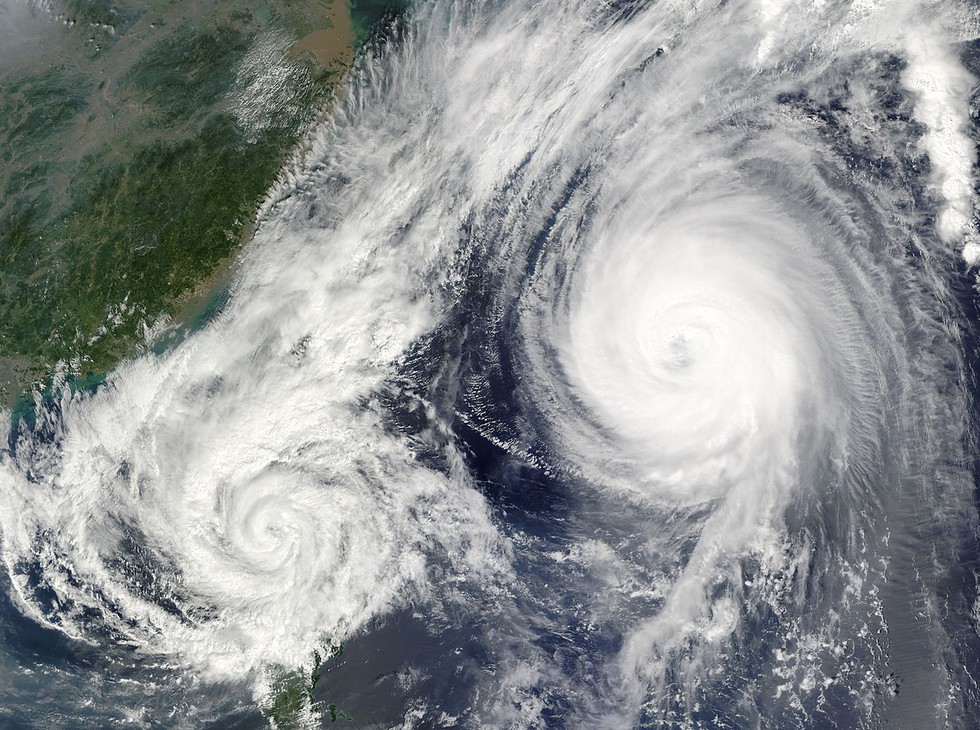
About:
What is Fujiwhara Effect?
- The Fujiwhara Effect is any interaction between tropical storms formed around the same time in the same ocean region with their centres or eyes at a distance of less than 1,400 km, with intensity that could vary between a depression (wind speed under 63 km per hour) and a super typhoon (wind speed over 209 km per hour).
- The interaction could lead to changes in the track and intensity of either or both storms systems. In rare cases, the two systems could merge, especially when they are of similar size and intensity, to form a bigger storm.
- There are five different ways in which Fujiwhara Effect can take place.
- The first is elastic interaction in which only the direction of motion of the storms changes and is the most common case. These are also the cases that are difficult to assess and need closer examination.
- The second is partial straining out in which a part of the smaller storm is lost to the atmosphere.
- The third is complete straining out in which the smaller storm is completely lost to the atmosphere. The straining out does not happen for storms of equal strengths.
- The fourth type is partial merger in which the smaller storm merges into the bigger one.
- Fifth is complete merger which takes places between two storms of similar strength.
- Fujiwhara effect was identified by Sakuhei Fujiwhara, a Japanese meteorologist whose first paper recognising the Fujiwhara cases was published in 1921.

About:
- Indian snow leopard experts received the Madrid-based BBVA Foundation’s Worldwide Biodiversity Conservation Award on behalf of a 12-nation intergovernmental alliance -The Global Snow Leopard Ecosystem Protection Program (GSLEP).
What is The Global Snow Leopard Ecosystem Protection Program (GSLEP)?
- The GSLEP is a first-of-its-kind intergovernmental alliance for the conservation of the snow leopard and its unique ecosystem.
- It is led by the environment ministers of 12 countries in Asia that form the home range of the snow leopard. These are Afghanistan, Bhutan, China, India, Kazakhstan, Kyrgyzstan, Mongolia, Nepal, Pakistan, Russia, Tajikistan and Uzbekistan. The total range spans two million square kilometres.
- The GSLEP Program’s secretariat is based in Bishkek, and is hosted by the Ministry of Natural Resources, Ecology and Technical Supervision of the Kyrgyz Republic.
- GSLEP was created in 2013 when officials, politicians and conservationists arrived at a common conservation strategy enshrined in the Bishkek Declaration (2013) to cooperate in the conservation of this species and its habitat.





























































































































































.png)
.png)
.png)
.png)
.png)


.png)
.png)
.png)





.png)
.png)






.png)
.png)
.png)
.png)
.png)
.png)
.png)
.png)
.png)

.png)







.png)
.png)


.png)
.png)
.png)


.png)

.png)
.png)





.jpg)

.png)
.png)


.png)

.png)
.png)
.png)

.jpg)

.jpg)


.png)

.png)
.png)
.png)
.png)
.png)
.png)
.png)
.png)
.png)
.png)




.png)

.png)





.png)
.png)
.png)
.png)
.png)
.png)
.png)
.png)
.png)
.png)
.jpg)
.jpg)

.png)
.png)
.png)
.png)
.png)
.png)
.png)
.png)
.png)
.png)
.png)
.png)
.png)
.png)
.png)
.png)
.png)
.png)
.png)
.png)
.png)
.png)



.png)
.png)

.jpg)
.jpg)


.jpg)
.jpg)
.jpg)
.jpg)
.jpg)

.jpg)








.jpg)
.jpg)
.jpg)
.jpg)
.jpg)

















.jpg)
.jpg)







.jpg)


















.jpg)
.jpg)



























































































.jpg)
.jpg)


























.jpg)

.jpg)










.jpg)








.jpg)




.jpg)










.jpg)


















.jpg)












































.jpg)














.jpg)
.jpg)
.jpg)





.jpg)

.jpg)
.jpg)





































































.jpg)


































.jpg)
.jpg)
















































.jpg)












.jpg)


.jpg)




.jpg)
.jpg)
.jpg)

.jpg)
.jpg)
.jpg)
.jpg)

.jpg)
.jpg)
.jpg)

.jpg)
.jpg)
.jpg)
.jpg)
.jpg)
.jpg)
.jpg)
.jpg)

.jpg)


.jpg)
.jpg)
.jpg)
.jpg)
.jpg)
.jpg)
.jpg)
.jpg)
.jpg)
.jpg)











.jpg)
.jpg)





.jpg)
.jpg)
.jpg)
























.jpg)
























.jpg)









.jpg)
.jpg)







.jpg)
.jpg)









































.jpg)
.jpg)
.jpg)
.jpg)
.jpg)

.jpg)
.jpg)
.jpg)
.jpg)
.jpg)


.jpg)
.jpg)
.jpg)
.jpg)
.jpg)

.jpg)
.jpg)
.jpg)
.jpg)
.jpg)
.jpg)
.jpg)
.jpg)
.jpg)
.jpg)
.png)

.png)
.png)

.png)
.png)
.png)
.png)


.jpg)
.jpg)

.jpg)
.jpg)
.jpg)

.png)
.png)
.png)
.png)
.png)
.png)
.png)

.png)
.png)
.png)
.png)
.png)
.png)
.png)
.png)
.png)
.png)





































































-min.png)



.png)




.png)








































